Hunting with Fire: Women, Foraging and the Ecosystem
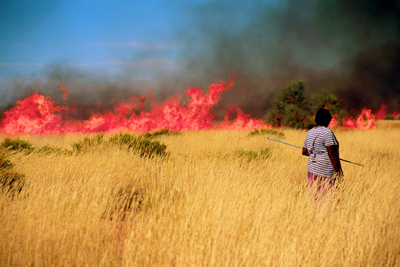
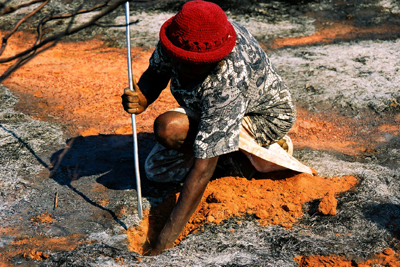
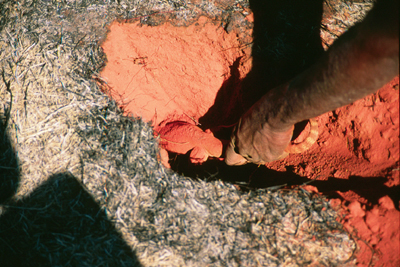
Researchers and students from the University of Maine are conducting the first large-scale investigation of the relationship between the contemporary subsistence, burning strategies, and biodiversity among Mardu Aborigines in the Western Desert. A large complement of Australia's ecological web has changed dramatically over the last 200 years. Today, biodiversity in some of the world's most expansive and sensitive deserts is critically threatened, especially as a result of changing fire regimes.
The Desert Mosaic For thousands of years, desert Aborigines have set fire to the arid savanna, creating an environmental patchwork to which much of the desert plants and animals are specifically adapted. Where Aborigines have been removed from their lands, the desert patchwork has often been obliterated with devastatingly large wildfires.
A New Approach to
Fire and Land Management
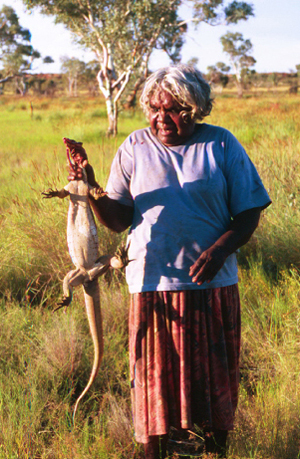
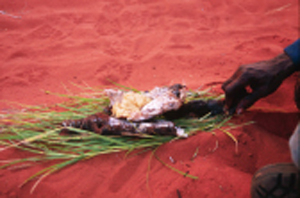
Selected References
Bird, D.W., R. Bliege Bird, C.H. Parker, and B. Bass (submitted manuscript). Aboriginal burning regimes and hunting strategies in Australia's Western Desert. Human Ecology.
Bird, D.W. and R. Bliege Bird (2003). Mardu children's hunting strategies in the Western Desert, Australia. In Culture, Ecology and Psychology of Hunter-Gatherer Children, B.S. Hewlett and M.E. Lamb (eds), New York: Aldine de Gruyter (in press).
Bird, D.W. and R. Bliege Bird (2003). Evolutionary and ecological understandings of the economics of desert societies: comparing the Great Basin USA and the Australian Deserts. In Desert Peoples, P.M. Veth and M. Smith (eds), London: Blackwell Scientific (in press).
Bliege Bird, R., D.W. Bird (2003). Human hunting seasonality: a case from Australia. In Primate Seasonality, ed. D. Brockman and C. van Shaik, Cambridge University Press (in press).
Latz, P. (1995). Bushfires and Bushtucker: Aboriginal Plant Use in Central Australia. Alice Springs: IAD Press.
Tonkinson, R. (1991). The Mardu Aborigines: Living the Dream in Australia's Desert. New York: Holt, Rhinehart and Winston.

